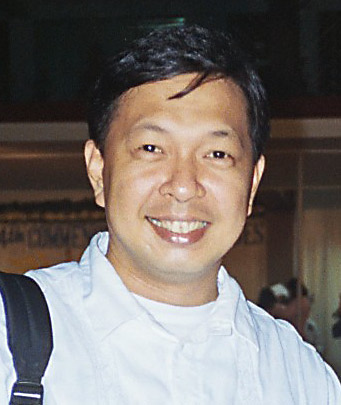Who's afraid of the post "Extreme Supermoon" 2011?
Many people have recently been talking about the super moon and how it was suppose to wreak havoc by triggering unnatural disasters around the globe.
I didn’t get to really observe the moon last March 19 (or March 20 for that matter). But one evening last weekend, I did see the moon quite magnificently clear, considering it has been cloudy for the past few days over the Philippine skies.
Remembering this beautiful scene, I stayed up last March 21 to take some pictures and catch a glimpse of the so-called ‘supermoon’ at least near its great closeness to the earth.
What is a supermoon? I learned the term was coined by a “certified professional astrologer”, Richard Noelle based in Arizona, USA in an article he wrote over 30 years ago.
Noelle describes a ‘supermoon’ as:
“…a new or full moon which occurs with the Moon at or near (within 90% of) its closest approach to Earth in a given orbit. In short, Earth, Moon and Sun are all in a line, with Moon in its nearest approach to Earth. At any new or full moon, Earth and Moon and Sun are all in a line: Earth is in the middle in the full moon alignment, while the new moon happens with Moon in the middle. This coming together in an alignment is technically termed a syzygy. Sometimes - from a few times to a half-dozen times in a given year - these alignments also happen when the Moon is in its perigee, or closest approach to Earth. Astronomers call this very special alignment a perigee-syzygy. I call it a SuperMoon – which is a whole lot easier on the tongue.” (His latest print article on the subject appeared in the October-November 2007 issue of the Mountain Astrologer)

Apparently, some media reports have it completely wrong when they say that the last supermoon occurred some 18 years ago. On the contrary, there are (on the average) around 4 to 6 supermoon occurrences in a year. The March 19, 2011 is the closest supermoon of the year (2nd supermoon this year) but not by any means neither the first one in 18 years nor the first extreme supermoon during the same period. According to Noelle, the previous extreme supermoon happened only last January 30, 2010.

Still, the supposed connection of the Moon with both oceanic and crustal tides has in turn led to assertions that the supermoon phenomenon may be correlated with amplified risk of events such as earthquakes and volcanic eruptions. Nonetheless, the so-called evidence of such association is widely viewed to be unpersuasive.
According to Noelle, he believes that within three days before and three days after a supermoon, the Earth is more exposed to natural disasters such as extreme coastal tides, severe storms, volcanic eruptions and strong earthquakes.
He further states that Supermoon solar eclipses tend to have “a wider sphere of impact” stretching about a week before and after the exact syzygy. If that is the case, it then tends to imply a causal relationship with powerful natural disasters such as the Tōhoku earthquake of 2011 and the Indian Ocean earthquake and tsunami of 2004.
Some Dates to Ponder: Causation or Coincidence?
Hurricane and tidal surge that struck Galveston, Texas (September 8, 1900)
Supermoon (September 8, 1900)
Ashgabat, Turkmenistan 7.3 Richter scale earthquake (October 6, 1948 – within three days of a supermoon, allowing for time zones)
Mount Pinatubo eruption (June 16, 1991 – within three days of a supermoon)
Supermoon (Dec. 31, 2009)
Haiti 7.0 Richter scale earthquake (Jan. 12, 2010)
Extreme Supermoon (Jan. 30, 2010)
Christchurch earthquake (Feb. 22, 2011)
Supermoon (Feb. 22, 2011)
Hawke’s Bay earthquake (Feb. 3, 1931)
Supermoon (Feb. 3, 1931)
For this March supermoon Noelle predicted "a surge in extreme tides along the coasts, a rash of moderate-to-severe seismic activity (including Richter 5+ earthquakes, tsunami and volcanic eruptions), and most especially in this case a dramatic spike in powerful storms with heavy precipitation, damaging winds and extreme electrical activity. Floods are a big part of the picture in this case, although some of these will be dry electrical storms that spark fast-spreading wildfires."
By God’s grace, the only “major disaster” my family experienced that weekend was when our electric stove conked out that Sunday forcing me to immediately buy a new one. I didn’t hear of any major natural catastrophe anywhere in the world, days after the 19th or the 20th. Noelle though mentioned lately of wildfires in Colorado last March 22 after the occurrence of storms in the area.
Some studies (which include articles from the Berkeley Seismological laboratory and the U.S. Geological Survey) have reportedly seen a weak correlation between lunar activity and shallow, very low intensity earthquakes. On the other hand, no evidence has been gathered to establish any correlation with major earthquakes. [It has been cited that the Tōhoku earthquake and tsunami (2011) is the only earthquake of 8.0 magnitude or greater to have occurred within 2 weeks of the 14 extreme supermoons from 1900 to the present date]

Already regretful of missing to observe the supermoon of March 19/20. I promised myself to take some time and document my early post-supermoon observation.

I took this picture of the supermoon at exactly the start of the midnight hour (12:00 am) of March 21

Overcast skies continued to cover the supermoon (picture taken at 12:01 am)



I call this one – triple supermoon





‘Supernova’ moon

The post supermoon using different camera settings

The red moon

Cloudless bright supermoon

Bright red supermoon rising

‘Dancing’ supermoon

‘Chicken head’ supermoon
So was there a real super threat or just super hype?
Supermoons are here to stay. For their aesthetic brilliance, I wish they do stay the way they are. No more, no less. Let’s hope future scientific studies will finally and convincingly put to rest the fantastic claims of ramblers and soothsayers alike and let the plain truth prevail.
Labels: Environment, Space

